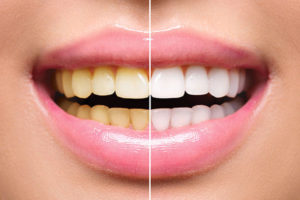Dental Veneers
Dental Veneers Can Enhance Smiles
Dental veneers are custom-made, thin wafers of either all-ceramic or composite resin that are bonded to the front of teeth. Dentists use them to change the color, shape, size, or length of teeth.
Process to Make Veneers
Patients have two options when they come to our office for all-ceramic veneers. Most commonly, the dental team fashions a veneer using our E4D restoration system. Other times, he sends an impression to a dental lab, and they fabricate the veneers.
All-Ceramic Veneers: When a patient comes to our office for all-ceramic veneers, dental professionals removes a thin layer of enamel on the front of each tooth. They takes an impression of the teeth and then makes temporary veneers for the patient. We can either send the impressions to our in-office milling unit, or we can send them to a dental lab for processing. When finished, the patient returns for a second appointment. At this time, dental care team bonds the veneers to the teeth.
Composite Veneers: Composite veneers are fashioned from the same material used for composite fillings. Unlike all-ceramic veneers, dental team does not need to remove enamel from the teeth. They etches the enamel, applies a bonding agent, and then places composite material on the teeth. The team works to cover the teeth with a thin layer of composite, then uses a curing light to harden them. Finally, dental team shapes and polishes the finished product.
All-ceramic Versus Composite Dental Veneers
Composite veneers can be completed in one appointment. And, while they are less expensive than all-ceramic veneers, they are not as durable and are more susceptible to chipping and staining. For veneers fashioned with our E4D system, patients enjoy the convenience of a single visit, and leave with a high quality, durable all-ceramic veneer. In some cases, such as when a patient wants to lengthen their teeth, the office dental team recommends the use of all-ceramic veneers because of their higher strength and durability.
Mouth Healthy, a website maintained by the American Dental Association (ADA), has as a short video and article talking about dental veneers. The video notes that because dentists remove enamel to make way for porcelain veneers, they qualify as an irreversible cosmetic procedure. The video also highlights that patients need to be mindful of foods that can stain veneers, such as coffee and red wine, especially if composite material is used. That said, this cosmetic dental procedure can dramatically improve the appearance of a patient’s teeth and smile.
